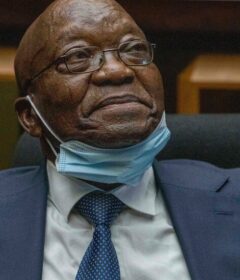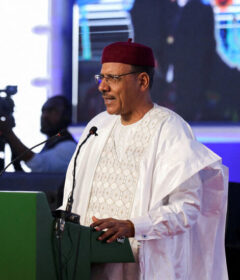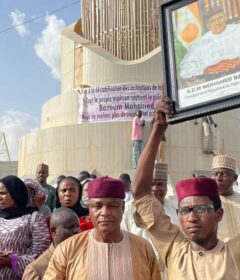Central African Republic profile
The Central African Republic (CAR) has been unstable since its independence from France in 1960.
It is rich in diamonds, gold, oil and uranium but has one of the world’s poorest populations.
It was plunged into turmoil in 2013 when Muslim rebels from the Seleka umbrella group seized power in the majority Christian country. A band of mostly Christian militias, called the anti-balaka, rose up to counter the Seleka.
Seleka handed power to a transitional government in 2014 under international pressure but months of violence followed and the country was effectively partitioned, in spite of the presence of a UN peacekeeping force and a French mission.
The country is undergoing an internationally supervised transition involving a constitutional referendum as well as presidential and parliamentary elections.
FACTS
Central African Republic
Capital: Bangui
Population 4.7 million
Area 622,984 sq km (240,535 sq miles)
Languages French, Sangho (lingua franca)
Major religions Christianity, Islam, indigenous beliefs
Life expectancy 51 years (men), 55 years (women)
Currency CFA (Communaute Financiere Africaine) franc
LEADERS
President: Faustin-Archange Touadera
Faustin-Archange Touadera, a former prime minister and maths professor, was declared the winner of a presidential election in February 2016 seen as crucial to turning the page on years of sectarian violence.
Mr Touadera won 62.71% of the hotly contested run-off vote compared with 37.29 for Anicet-Georges Dologuele, who won the first round of the vote in December and conceded defeat in the second.
He campaigned as a peacemaker who could bridge the religious divide.
The well-respected former mathematics professor served as the last premier of ex-president Francois Bozize who was deposed in a coup in 2013.
The ouster of Bozize, a Christian, by the mostly Muslim Seleka rebels unleashed a spiral of violence between Muslim and Christian militias that left thousands dead, and many voters expressed a strong desire for peace when they cast their ballots.
MEDIA
Radio is the most-popular medium. The media consist largely of low-circulation newspapers and “often-isolated” radio stations, says Reporters Without Borders (RSF).
Persistent conflict has hampered media development. Officials and armed groups have targeted journalists and media outlets.
TIMELINE
Some key dates in the history of the Central African Republic:
1880s – France annexes the area, partitions it among commercial concessionaires.
1960 – The Central African Republic becomes independent with David Dacko as president. He turns country into a one-party state.
1965 – Dacko ousted by the army commander, Jean-Bedel Bokassa, who declares himself emperor of the “Central African Empire”.
1979 – Bokassa ousted in a coup backed by French troops.
1981 – Army commander Andre Kolingba seizes power.
1993 – Ange-Felix Patasse wins presidential elections, ending 12 years of military rule.
2003 – Rebel leader and former army commander Francois Bozize seizes power.
2009 – Clashes between government and rebels are ongoing. UN Security Council agrees to creation of UN peace building office for CAR to address ongoing insecurity.
2012 November – New Seleka rebel coalition rapidly overruns north and centre of country, and eventually the capital.
2013 – Turmoil as rival Muslim and Christian fighters are accused of killing hundreds of people.
2014 – Michel Djotodia – coup leader who headed the Seleka coalition – quits as president. Catherine Samba-Panza takes over as interim leader.
2015 – Referendum on constitutional changes in November, followed by first round of presidential election.
2016 – Tension ahead of second round of presidential election, which however, passes off peacefully. Constitutional court had earlier annulled parliamentary election results, citing irregularities.
Source: Read Full Article


